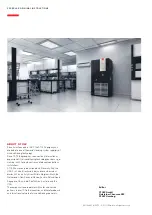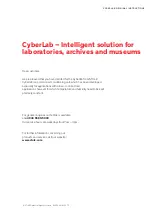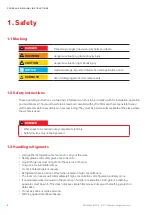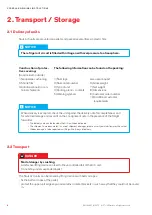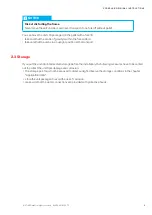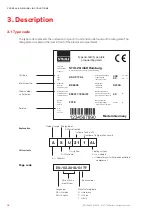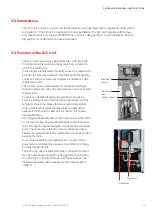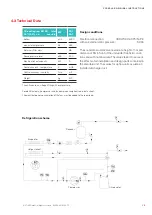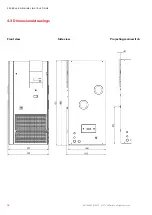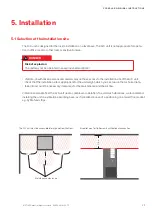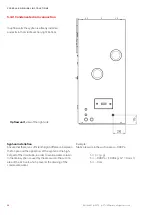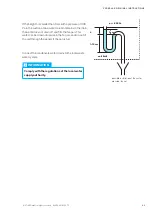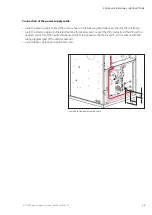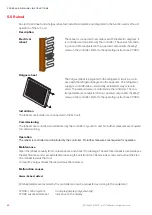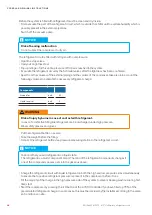
13
© STULZ GmbH – all rights reserved EN/02.2018/G17F
cyberlab original instructions
3.4 Control
temperature control
The temperature is controlled by three components:
1. speed-controlled compressor (EC compressor)
2. electrical reheat
3. hotgas reheat
The speed-controlled compressor is continuously in operation as soon as the A/C unit is switched on. In case
the thermal room load is too low in relation to the cooling capacity, the electrical reheat is switched on.
The electrical reheat as well as the EC compressor are controlled by a PID control.
As soon as the electrical reheat and the EC compressor run simultaneously, the setpoint spread is active. The
setpoint spread is 0,1 K for each component. With an active setpoint spread and a setpoint of e.g. 24°C the
compressor is controlled to achieve 24,1°C and the electrical reheat to achieve 23,9°C.
The hotgas reheat is switched on and off by a start temperature and a hysteresis. If the start temperature is
achieved and if a dehumidification request exists, the hotgas reheat is switched on.
Humidity control
The humidity is controlled by three components:
1. electronical expansion valve
2. speed-controlled compressor (EC compressor)
3. optional external humidifier
If the humidity is smaller than the setpoint humidity, the air is humidified by the optional external humidifier.
If the humidity is bigger than the setpoint humidity, the air is dehumidified by the electronical expansion valve
and by the EC compressor. You can set whether dehumidification is controlled according to the relative humi-
dity or to the dew point.
For the EC compressor a minimum speed for dehumidification can be set.
Control accuracy
The control accuracy (± 0,5 K / ± 3 % r.h.) depends on:
• the positioning of the A/C unit
• the size of the room to be conditioned
• the thermal load
• the air volume flow
• the stability of room conditions
• humidity control at minimal load
We recommend to only operate one active CyberLab unit per room. Several CyberLab units can be installed in
the room, but only one of these units may be in operation at a time. This can be achieved by the failure depen-
dent change-over of the sequencing function (no time dependent sequencing).
A supply air sensor is available as an option and is delivered loose.


